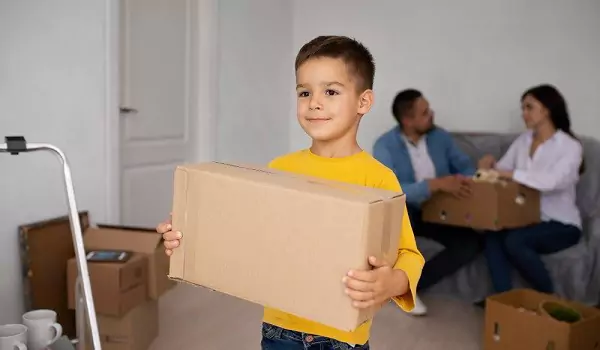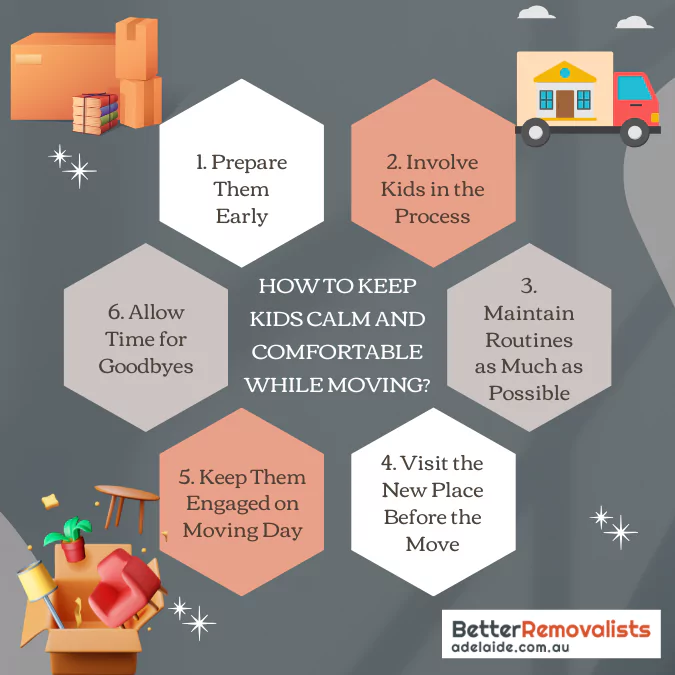


“But I don’t want to leave my room!” “What if my new school is scary?” If you’ve ever heard these kinds of questions—or something similar—you’re not alone. Moving can make little hearts feel big feelings, and what we do with it can help shape how our kids navigate change in the moment and down the road. The unfamiliarity of a new house, disturbances to their daily routines, and the sight of everything they love being packed away can cause feelings of worry, uncertainty, and even behavioural problems.
While adults may find the event of a move stressful due to logistical concerns, children often struggle with the emotional aspect of it—leaving behind familiar surroundings, neighbourhood friends and the only home they may have known. It is important to assist them in handling their emotions in the right way. With the right strategies, parents can turn the transition into a smoother and more pleasant experience for their kids.
This article provides practical advice on how parents can keep their children calm and comfortable throughout the duration of house relocation. From engaging them in the process to obtaining professional assistance from professional Removalists Adelaide, each tactic plays a critical role in facilitating a smoother process.
Preparing children ahead of time is one of the most effective strategies to help them cope with the transition. Announce the transfer as soon as it is confirmed, and explain the reasons in an age appropriate language. This transparency allows the youngsters to comprehend the shift, ask questions and express their emotions appropriately.
Use visual aids such as maps or images of the new house and community to help them envision what will happen in the future. Involving expert removalists in Adelaide early on can help establish a timeline for the entire operation, making the move feel more organised and less rushed for everyone involved.

Inclusion can really help ease a child’s anxiety about moving. Make them pack their own items and decide what to keep, donate, or discard. You could also let them decorate their moving boxes with stickers or photos; this will give them a sense of ownership and control over the move. If you are hiring any removalists, ensure your child knows what their role is. Let them know that these are reliable people who have come to help with the move; this will ease their minds and make them feel more at ease with the process.
Children live by routine and any interference with it will establish feelings of stress. Try to maintain a regular schedule for meals, naps and bedtime, even during the busiest phases of the move; maintaining consistency helps provide a sense of stability amid the unfolding chaos.
To maintain their routines, pack a separate “basics” bag for each child that includes their favourite toys, snacks, clothes and comfort items. Even on moving day, create a space for them to have quiet time or nap time to help keep the kids grounded.
If at all possible, tour the new home with your children prior to moving day. Do a walk-through of the house together, indicate where their room will be, get familiar with the neighbourhood and perhaps visit some parks or schools in the vicinity. This will dispel their fear of the unknown and allow them to be excited about the event that is to come.
If an in-person visit is not possible, attempt a virtual tour or provide them with pictures. Once your items are packed and prepared, reliable Removalists Adelaide can provide a simple and speedy relocation, giving your family more time to acclimate and explore the new environment.
Moving day can be hectic and kids can either feel left out or get in the way. To avoid both, designate a safe, quiet space for them to stay occupied—perhaps at a relative’s house or with a babysitter. If they’re old enough and want to help, assign them simple tasks like carrying light items or checking and accounting for boxes. Give them a “moving day kit” with activities, colouring books, games and snacks to keep them entertained throughout the process. This keeps the mood light and helps reduce feelings of overwhelm.
Saying goodbye to familiar people and places is crucial for emotional closure. Help your kids plan farewells with neighbours, friends and teachers. Take photos of their favourite places like the park, school or backyard to create a memory album. Consider hosting a small farewell gathering where they can share memories and collect contact information to stay in touch. This process not only validates their emotions but also teaches them a healthy way to manage transitions.
Once you’ve moved to the new home, don’t rush to get everything set up and unpacked in a single day. Focus on setting up your children’s rooms first to give them a familiar and comforting space, re establish routines as quickly as possible and spend time exploring the new neighbourhood with your children.
Encourage them to talk about their feelings and listen attentively. Making new friends and adjusting to a new school will take time, so be patient. Celebrate small milestones, like sleeping in their new room or finding a favourite local spot, to help them adjust positively.

Moving with children is a delicate balancing act, but with thoughtful planning, clear communication and a child centric approach, the transition can be managed smoothly. Each step you take will help mould your child’s experience. After all, a move isn’t just about changing locations—it’s about helping your family grow together in a new environment. So, Good Luck and Happy Moving!



